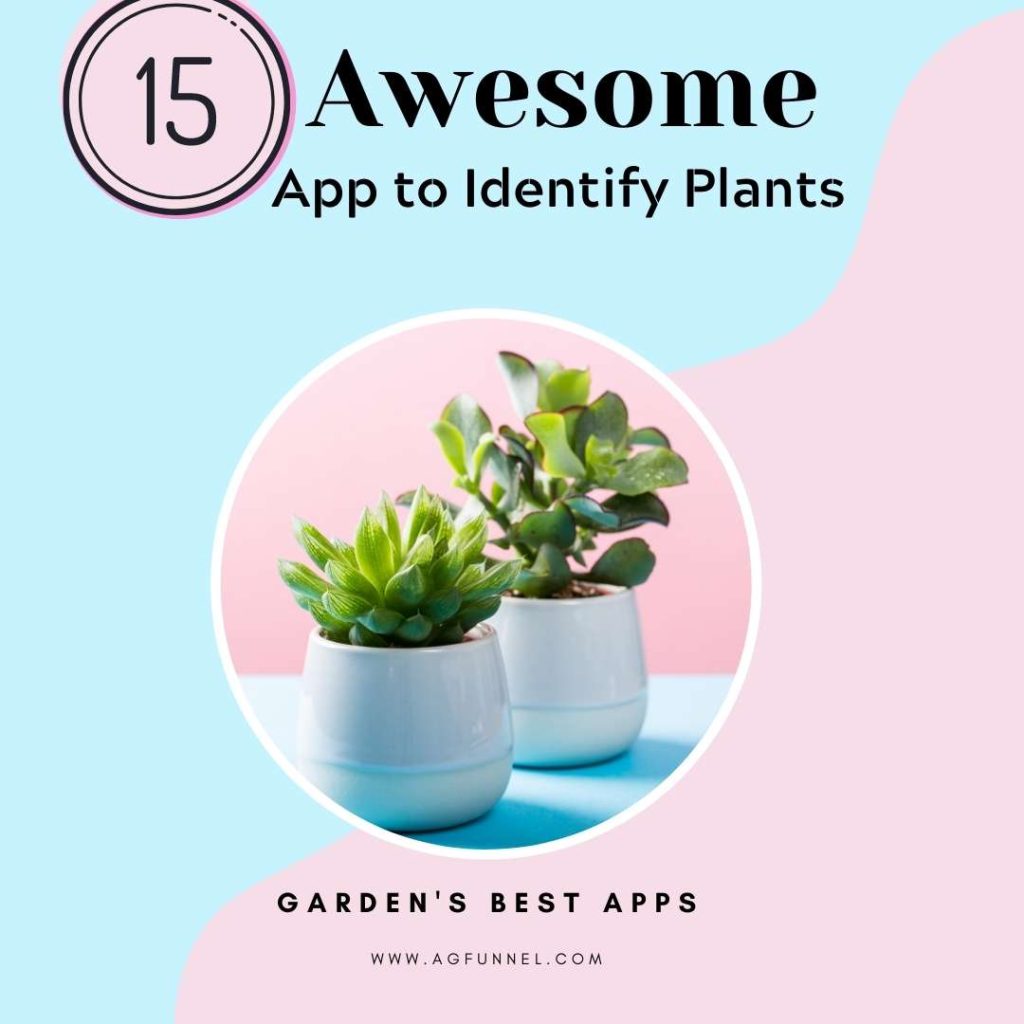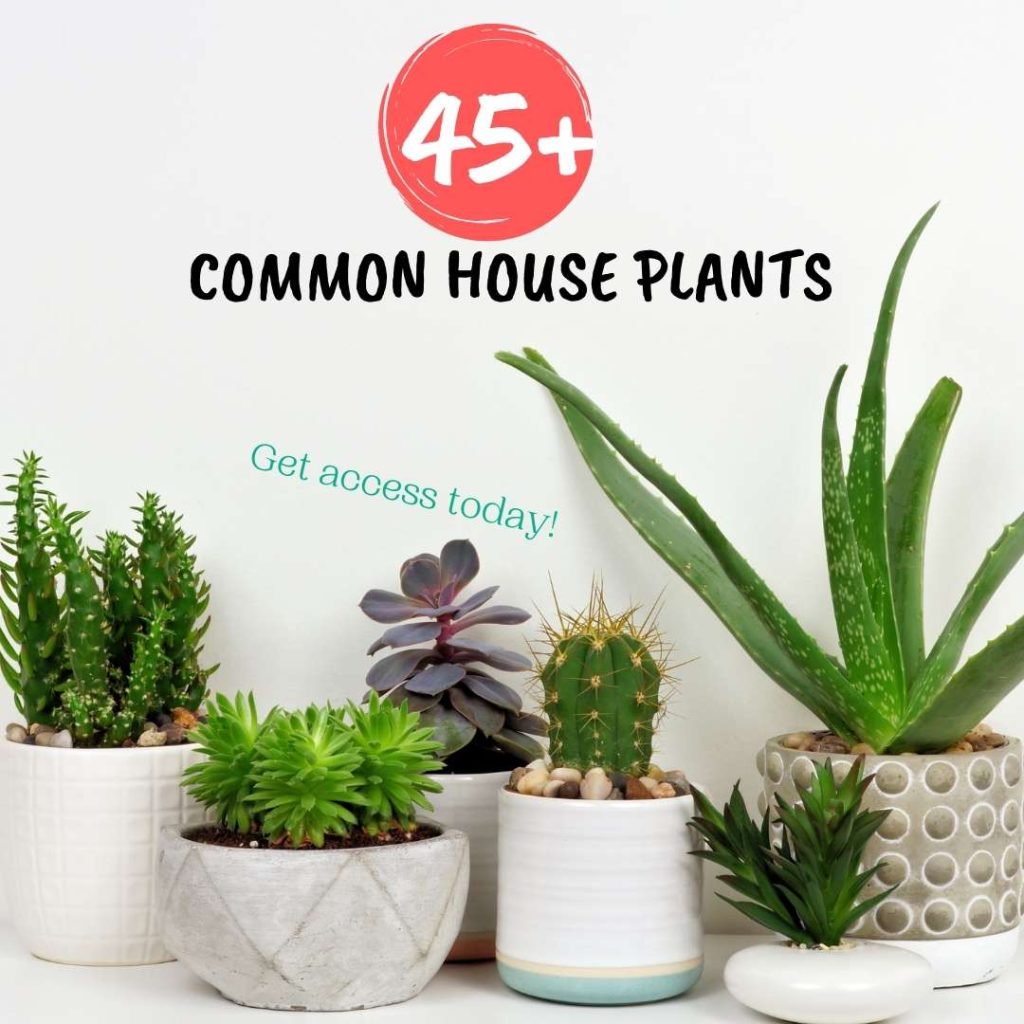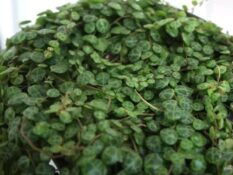Are you looking for an interesting and exotic flowering plant to add to your garden? Look no further than Dipladenia! This article will help you learn everything about growing and caring for the Dipladenia plant (Brazilian Jasmine). Also known as Brazilian jasmine, Dipladenia is a hardy plant that can thrive in various climates. It grows uniquely, with vines that cascade down as it matures. It’s also beautiful, with delicate pink flowers that will add a touch of elegance to any landscape. It’s perfect for adding interest to containers or hanging baskets and is a great choice for gardens with limited space.
Brazilian Jasmine Plant Care
Also known as Brazilian jasmine, Dipladenia is a hardy plant that can thrive in various climates. It grows uniquely, with vines that cascade down as it matures. It's also beautiful, with delicate pink flowers that will add a touch of elegance to any landscape. It's perfect for adding interest to containers or hanging baskets and is a great choice for gardens with limited space.
Size And Growth
The size and growth of Dipladenia can vary depending on the climate and the amount of sunlight it receives. Dipladenia will grow quite large in warm climates, while it will be smaller in cooler climates. But on average, Dipladenia can reach a height of 30 to 60cm (12 to 24 inches).
Plant Hardiness Zone - 9
Dipladenia Bush
At first, the plant has an upright growth habit, but the vines will start to grow downwards after it matures. So, it is perfect to grow Dipladenia in hanging baskets, planters, and borders or on raised beds.
Flowering Season
Dipladenia typically blooms from spring to fall, with a peak in summer.
Dipladenia Flower
The fragrance of Dipladenia flowers is often likened to that of jasmine. They have a sweet, floral aroma that can be enjoyed from both near and far.
Dipladenia Care
There are a few things to take care of before you can have beautiful Dipladenia blossoms in your garden. Let's look at some of the important considerations below.
Light: How Much Light Is Needed For Dipladenia Plants?
Dipladenia plants need at least four to six hours sunlight a day to bloom properly. They will become spindly and won't flower if they don't get enough light. Dipladenia plants can be grown indoors with plenty of natural light through a window or grow lights. If you choose to keep your plant inside, ensure it's in an area with good air circulation so the leaves don't get too hot and dry out quickly. In the summer months, move the plants outdoors where possible.
Dipladenia Winter Care: How Much Temperature Does The Dipladenia Thrive?
Dipladenia plants can thrive in various climates but prefer a warm environment. It can thrive in temperatures between 50 and 95 degrees Fahrenheit.
It should be kept indoors and watered sparingly to prevent root rot from occurring in the winter. The best way to keep your Dipladenia healthy during colder weather is by providing it with enough light through grow lights or a sunny window. In the summer, move it outdoors where it can get plenty of direct sunlight.
How To Water A Dipladenia Bush? When Do We Need To Water Dipladenia Plants?
Dipladenia plants need watering regularly, especially when they are flowering. Usually, it would be best if you watered them whenever the soil felt dry to the touch. You may need to water it more often during hot weather or if the plant is in a container. Avoid getting the leaves wet; this can cause them to rot. If your Dipladenia plants are in the pots, they must be watered more frequently.
How To Fertilize A Dipladenia Bush? Do We Need To Feed Dipladenia Plants?
You can feed your Dipladenia plants with a diluted fertilizer solution twice a week or feed them with a slow-release fertilizer in the blooming seasons. This will help them to grow healthy and bloom beautifully.
Dipladenia Pruning: When To Prune A Dipladenia Bush? When And How To Prune A Dipladenia?
Dipladenia plants don't need much pruning, but you can trim them if they get too big or if you want to shape them. You can also deadhead (remove) the spent flowers to encourage new blooms. Pruning must be done before new growth begins in the spring or early summer.
What Types Of Soil Are Necessary For Dipladenia?
The best type of soil for Dipladenia is fertile, well-drained soil high in organic matter. You can improve the fertility and drainage of your soil by adding organic matter such as compost or aged manure. You can also transplant your Dipladenia in a container or on the ground if it's too big for its current pot. Be sure to water it well after transplanting.
How To Propagate A Dipladenia Bush? Propagation by Cuttings
Dipladenia can be propagated by rooting stem cuttings in late spring or early summer. You can also divide the plants if they get too big. To propagate Dipladenia:
- Take a softwood cutting from a healthy plant in the spring. The cutting should be about five to eight inches long and have two or three leaves.
- Remove all the flowers that may still be on the stem.
- Dip it into rooting hormone and place it in a pot with well-draining soil that is slightly moistened but not soggy.
- Put the pot where there's indirect light until new growth begins, at which point you can put it in a sunny spot or under grow lights.
How To Choose The Right Dipladenia Plant?
There are several varieties of Dipladenia plants to choose from, so selecting the one best suited for your needs is important. If you're looking for a plant that will bloom all season long, look for varieties listed as "everblooming," such as 'Red Riding Hood.'
When you're ready to buy a Dipladenia plant, be sure to
- Select the Dipladenia plant that is healthy and has lush green leaves.
- Avoid plants with yellow or wilted leaves, indicating they are not well cared for.
- You should also check the roots to ensure they are white and healthy-looking.
- Once you've selected a healthy plant, transplant it into a pot one size larger than the nursery pot, this will give the plant room to grow.

Looking for the best app to identify any plant using your iPhone or android?
Varieties Of Dipladenia
The most popular varieties are:
- Dipladenia Marbella' Hot Pink'
- Dipladenia 'My Fair Lady'
- Dipladenia ‘Scarlet Pimpernel’
- Dipladenia' Rio White'
Other common varieties include Opal Citrine, Jade Scarlet, Agathe White, Sundaville Red, Sundaville Pretty Rose, Rubiniana, Jade White, Opal Fuchsia Flammé, Dipladenia madinia, Rio Dipladenia, and Cream pink. They come in different colors, such as Dipladenia white, yellow Dipladenia, hot pink, etc.
Pictures of Dipladenia in Containers (Red Dipladenia Bush)
Dipladenia Rio plant has tiny, pointed green leaves with a glossy sheen and is a dark green color. It also has smaller tube-shaped blooms compared to Mandevilla flowers that bloom in various colors ranging from pink to crimson to orange, with a delicate aroma. Rio flowers are available in various hues, from bright to pale pink.
Incredibly showy and easy to grow, a vine with large, trumpet-shaped blooms creates a splendid centerpiece on a trellis in the garden or a patio container. Produces an abundance of blooms all season long, sure to draw butterflies and hummingbirds to the garden.
Where To Plant Dipladenia? Positioning Dipladenia Plant indoors
When positioning your Dipladenia plant indoors, please place it in a sunny spot where it will receive plenty of indirect light. You can also place it under grow lights if you don't have a sunny spot available. Dipladenia plants need at least six hours of sunlight daily to stay healthy and flower well.
How To Plant Dipladenia? Planting In Containers
If you are planting your Dipladenia in containers, use a pot with a drainage hole. Fill the pot with well-draining soil that is high in organic matter. To improve fertility and drainage, you can also add compost or aged manure to the soil. Dipladenia does not need a lot of fertilizer, so adding slow release fertilizer should be good for a few months. Be sure to water the plant well after planting.

The #1 guide to choosing the right houseplants for your home.
Dipladenia Care: Common Problems Of Dipladenia
If you want to know about your Rio Dipladenia care, well, first, you need to understand some of the common problems of Dipladenia:
Aphid infestations, root rot, and yellow leaves are some common problems that Dipladenia plants face.
- Aphid infestations: Aphids are tiny, sap-sucking insects that feed by piercing the stems and leaves of plants. Dipladenia plants can get aphid infestations, which will cause their leaves to turn yellow and fall off. The best way to prevent this problem is by giving your Dipladenia plants the proper care they need: full sun, well-drained soil with plenty of organic matter, and regular watering but not too much.
- Root rot: Dipladenia plants can get root rot if they're overwatered. This will cause their leaves to turn yellow and wilt. To prevent this problem, give your Dipladenia plants the proper care they need: full sun, well-drained soil with plenty of organic matter, and regular watering but not too much.
- Yellow leaves: Yellow leaves signify that something is wrong with your plant. They could be overwatering or underwatering, pests like aphids or spider mites, or nutritional deficiency. The best way to determine the cause of your plant's yellow leaves is by checking the soil moisture levels, looking for pests, and doing a soil test. Adjust your watering habits accordingly if you find the problem is overwatering or underwatering. If you find that the problem is a nutritional deficiency, add compost or aged manure to the soil to improve fertility and drainage.
.
Dipladenia is an older classification for plants now commonly falling under the genus Mandevilla. Both plants are tropical and evergreen and have a downward growth habit. Mandevilla is climbing plants, while Dipladenia is more shrub-like. Both plants are native to South America and have similar care needs. Dipladenia flowers are tube-shaped, while Mandevilla flowers are bell-shaped.
What Are The Differences Between A Mandevilla And A Dipladenia?
- Dipladenia bush has smaller, more pointed leaves that are dark green and glossy, while Mandevilla plants have bigger, broader leaves. But it also depends on which cultivar of each kind you are growing.
- Another distinction is the growth pattern: Dipladenia has a fuller form and resembles a shrub, although you can cultivate it vertically if desired. Mandevilla resembles a vine.
- Dipladenia has smaller blooms in comparison to the large trumpet-shaped flowers of Mandevilla.
What Are The Benefits Of Growing Dipladenia?
There are many reasons why you might want to grow a Dipladenia plant.
- They're easy to care for and don't require much maintenance. They also thrive in full sun and well-drained soil, making them an ideal plant for gardeners who don't have much time to spend on their plants.
- Dipladenia colors: They also produce beautiful flowers throughout the summer months, which will add color and life to any garden or patio.
- Lastly, Dipladenia plants are a great way to attract hummingbirds and butterflies to your garden and other pollinators.
.
If you're looking for an interesting, low-maintenance plant that will add beauty and wildlife to your space, then a Dipladenia might be perfect!
Dipladenia is a beautiful and easy-to-care-for plant that can add color and life to any space. Its downward growth habit is perfect for hanging baskets, planters, and containers. It's also easy to propagate, so you can share your plants with friends or add them to your garden. With a little care, your Dipladenia plant will thrive and bloom for many seasons.
I hope this article was helpful. Happy gardening!
FAQ
How To Overwinter Dipladenia?
Have you ever thought about how can you take care of Dipladenia in the winter? Dipladenia is a tropical plant that needs to be overwintered in a warm place. When temperatures drop below 50 degrees F, move your plants indoors. Keep your plants in a sunny spot and water them regularly. Move your plants back outside when the weather starts to warm up again.
Is Dipladenia perennial or annual?
Dipladenia is a perennial plant. It will return yearly if you provide it with the proper care.
Is Dipladenia a climber?
No, Dipladenia is not a climber. It has a fuller shape and looks more like a shrub. It has a downward growth habit, ideal for planters, containers, and hanging baskets.
How fast does Dipladenia grow?
Dipladenia is a slow-growing plant. It takes time and effort to grow, yet it will undoubtedly flourish if you provide it with patience and attention.
How to plant a Dipladenia?
Dipladenia can be planted in pots or on the ground, but make sure to use well-draining soil. When planting pots, use a potting mix specifically for succulents or cacti. You can use an all-purpose potting mix. When planting in the ground, amend your soil with compost or aged manure to improve fertility and drainage. Water your plant regularly, especially during hot weather.
Do Dipladenia come back every year?
Yes, Dipladenia returns yearly if you provide it with the proper care.
How long does Dipladenia last?
Dipladenia can last for many years with the proper care. Ensure you regularly water and fertilize your plant and provide a sunny spot.
How big does a Dipladenia bush get?
A Dipladenia bush can get quite big, up to 3 or 4 feet tall. Make sure to provide it with plenty of space to grow.
Should Dipladenia be cut back?
No, cutting back is not that necessary for Dipladenia. However, if you want to keep your plant in check, you can prune it back occasionally to maintain its shape. Use sharp scissors and cut the stem just above a leaf node.
How do you look after Dipladenia?
Watering and fertilizing your Dipladenia is essential for its survival. Make sure to water your plant regularly, especially during hot weather. You can also fertilize your plants with a diluted liquid fertilizer twice a month. Be sure to give your plant a sunny spot, as it needs plenty of light to thrive.
Does the Dipladenia plant require trellis?
Dipladenia does not require a trellis. They have a fuller shape and look more like a shrub than a climber. Dipladenia grows downwards, so they are ideal for planters, containers, and hanging baskets.
What does the Dipladenia flower look like?
Dipladenia flowers are tube-shaped and come in various colors, including pink, crimson, and orange. They have a delicate aroma and bloom from late spring to early summer.
What is the best way to propagate Dipladenia plants?
The best way to propagate Dipladenia plants is by taking cuttings from the new growth of the previous plants.
How to care Dipladenia plant against pests?
If you are having trouble with pests or diseases on your Dipladenia, you can do a few things to remedy the situation. First, make sure to water and fertilize your plant regularly. You can also spray your plant with a neem oil solution to help control pests. Treat your plant with a fungicide if you notice any disease, such as wilting leaves or spots on the leaves.
What are these stupid little white bugs who are eating my pretty Dipladenia?
Those are probably whiteflies. Whiteflies are tiny winged insects that feed on the sap of plants. They can cause damage to your plant by sucking the juices out of the leaves, which can lead to wilting and yellowing leaves. You can use a neem oil solution or insecticidal soap to get rid of whiteflies. You can also try putting up sticky traps to catch them.
How do I get my Dipladenia to bloom?
To get your Dipladenia to bloom, provide it with plenty of sun and water. You can also fertilize your plant with a blooming fertilizer to encourage flowering. Deadhead the spent flowers to promote new growth.
Can Dipladenia plants tolerate frost?
No, Dipladenia plants are not frost tolerant. They should be grown in USDA hardiness zones nine through eleven. If you live in a colder climate, you can grow Dipladenia as an annual plant.
What is the ideal temperature for Dipladenia plants?
The ideal temperature for Dipladenia plants is between sixty and seventy degrees Fahrenheit.
Can I leave my Dipladenia outside in the winter?
Yes, you can leave your Dipladenia outside in the winter if you provide adequate protection, such as mulching your plant with straw or leaves to help keep it warm. You can also use cold frames if your plants are small. Make sure to bring your plant inside if there is a risk of frost.
What are the common problems that Dipladenia plants face?
Dipladenia plants can get root rot if overwatered, so be sure not to water them more than necessary and avoid getting the leaves wet. They can also suffer from aphid infestations, whiteflies, and spider mites. If you notice any of these problems on your plant, take action immediately to remedy the situation. The best way to prevent these problems is by giving your Dipladenia plants the proper care they need: full sun, well-drained soil with plenty of organic matter, and regular watering but not too much.
How do I know if my Dipladenia plant has root rot?
Root rot will cause your plant's leaves to turn yellow and wilt. The roots will also be black and mushy. If you suspect your plant has root rot, remove it and discard all the soil from its pot. Rinse the roots with water and repot in fresh soil.
Is my Plant a Dipladenia or Mandevilla? How to know Dipladenia Vs Mandevilla?
The foliage of Dipladenia is quite different from that of Mandevilla. The leaves of Dipladenia are pointed, deep green, and somewhat glossy, while the leaves of Mandevilla are larger with a broader shape. The flowers are trumpet-shaped and full of pink, white, yellow, and red hues.
Is Rio Dipladenia perennial or annual: Is Rio Dipladenia perennial?
Yes, Rio Dipladenia is a perennial plant. It means that in areas with milder winters without frost, it will return the following year and will not need to be replanted.
Are Dipladenia poisonous to dogs?
Dipladenia is not poisonous to dogs, but some Mandevilla plants may be. If your dog eats any part of a Mandevilla plant, he may experience vomiting, diarrhea, and drooling.
Does Dipladenia attract hummingbirds?
Yes, Dipladenia attracts hummingbirds. The tubular flowers are a favorite of these birds, and they will be drawn to your garden by the sweet nectar.
What Are the Similarities in Caring for Dipladenia and Aglaonema Pictum Tricolor Plants?
Caring for Dipladenia and growing Aglaonema Pictum Tricolor plants requires attention to light and water. Both plants thrive in bright, indirect light and prefer their soil to dry out slightly between waterings. Additionally, they both benefit from regular fertilization during the growing season.
Dipladenia hedge: How to Plant a Dipladenia Bush?
A Dipladenia hedge is a great way to add color and interest to your garden. It can be used to form a border or provide screening between your property and your neighbor's. Choose various colors to create a beautiful hedge that will attract hummingbirds and butterflies.

How to master gardening? Download these essential home and gardening ebooks today!









